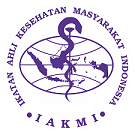Parental Communication as a Protective Factor Against Adolescent Risky Sexual Behavior: A Meta-Analysis
DOI:
https://doi.org/10.26911/thejhpb.2025.10.03.05Abstract
Background: Adolescence is a significant developmental stage marked by notable physical, psychological, and social changes. Adolescent reproductive health surveys show that a number of teenagers report engaging in premarital sexual intercourse without fully understanding its social and health consequences. Given this phenomenon, it is crucial to understand the factors that can protect them from risky sexual behaviors, particularly starting from the family. This study aimed to estimate the impact of family communication on risky sexual behavior in adolescents.
Subjects and Method: This research is a meta-analysis and systematic review using the PRISMA diagram with PICO frame work (P= adolescent; I = parental communication; C= no parental communication; O= risky sexual behavior). Primary studies were searched through several indexing databases, including PubMed, Google Scholar, and ScienceDirect. Keywords used to facilitate the search for articles include: “parental participation,” or “parental communication,” or “family interaction,” or “sexual risk” or “sexual risk behavior” AND “adults” or “adolescents.” The inclusion criteria for this study are articles published using a cross-sectional study design up to 2024. The statistical analysis used in this study was conducted using the RevMan 5.4 meta-analysis program with both fixed effect and random effect approaches to present the data in the form of forest plots and funnel plots.
Results: A total 9 Articles were included in the meta-analysis. The results of the study show that adolescents with low family participation in sexual education, or in the absence of parental communication, are 1.46 times more likely to engage in risky sexual behavior compared to adolescents who receive sexual education or have parental communication, and this result is statistically significant (aOR= 1.46; CI 95%= 1.43 to 1.49; p<0.001).
Conclusion: adolescents with low family participation in sexual education, or in the absence of parental communication are more likely to engage in risky sexual behavior compared to adolescents who receive sexual education or have parental communication.
Keywords:
adolescent, juvenile delinquency, parental communication, sexual behaviour, social interactionHow to Cite
References
Afriani D (2022). Pendidikan seks bagi remaja. Penerbit NEM.
Alamsyah A (2023). Tirani kebahagiaan dan media sosial: Sebuah kajian media dan politik. J Polit Profetik. 11(1):87–110. https://doi.org/10.24-252/profetik.v11i1a6
Alemu MT, Dessie Y, Gobena T, Maze-ingia YT, Abdu AO (2018). Oral and anal sexual practice and associated factors among preparatory school youths in Dire Dawa city adminis-tration, Eastern Ethiopia. PLoS ONE. 13(11):1–16. https://doi.org/-10.1371/journal.pone.0206546.
Ayalew M, Mengistie B, Semahegn A (2014). Adolescent-parent commu-nication on sexual and reproductive health issues among high school students. Reprod Health. 11(1):77.
Bizuwork MG, Hailu A, Taderegew MM, Bizuwork YG, Alebie A, Zegeye B. (2022). Assessment of risky sexual behaviours and associated factors among adolescents in Shewa Robit Town, Northeast, Ethiopia: A cross-sectional study. Pan Afr Med J. 41:1–10. https://doi.org/10.1160-4/pamj.2022.41.264.25846
Bozzini AB, Bauer A, Maruyama J, Simõ-es R, Matijasevich A. (2021). Factors associated with risk behaviors in adolescence: A systematic review. Braz J Psychiatry. 43(2):210–221. https://doi.org/10.1590/1516-4446-2019-0835
Caroline A, Yunanto TAR. (2020). “Ngobrolin seks” dalam persepsi pe-rempuan pada usia dewasa. Intuisi J Psikol Ilmiah. 12(1):18–26.
Dessie Y, Berhane Y, Worku A. (2015). Parent-adolescent sexual and reproductive health communication is very limited and associated with adolescent poor behavioral beliefs and subjective norms: Evidence from a community-based cross-sectional study in Eastern Ethiopia. PLoS ONE. 10(7):1–14. https://do-i.org/10.1371/journal.pone.0129941
Hasanah U, Arista I, Silitonga M. (2020). Komunikasi dalam keluarga dan asertifitas remaja penyalahguna narkoba. Sosio Konsepsia. 10(1):74–83. https://doi.org/10.33007/ska.v-10i1.1971
Jones F, Partridge C, Reid F. (2008). The Stroke Self-Efficacy Questionnaire: Measuring individual confidence in functional performance after stroke. Chronic Illn. 4(4):244–252. http-s://doi.org/10.1177/1742395308096513
Mlunde LB, Poudel KC, Sunguya BF, Mbwambo JKK, Yasuoka J, Otsuka K, Ubuguyu O, et al. (2012). A call for parental monitoring to improve condom use among secondary school students in Dar es Salaam, Tanzania. BMC Public Health. 12(1):1061. https://doi.org/10.1186-/1471-2458-12-1061.
Moher D, Liberati A, Tetzlaff J, Altman DG (2009). Preferred reporting items for systematic reviews and meta-analyses: The PRISMA state-ment. J Clin Epidemiol. 62(10):1-006–1012. https://doi.org/10.101-6/j.jclinepi.2009.06.005
Patel H, Chambers R, Littlepage S, Rosenstock S, Richards J, Lee A, Slimp A, Melgar L, Lee S, Susan D, Tingey L. (2021). The association of parental monitoring and parental communication with sexual and substance use risk behaviors among Native American youth. Child Youth Serv Rev. 129:106171. https://doi.org/1-0.1016/j.childyouth.2021.106171
Reis LF, Surkan PJ, Atkins K, Garcia-Cerde R, Sanchez ZM. (2023). Risk factors for early sexual intercourse in adolescence: A systematic review of cohort studies. Child Psychiatry Hum Dev. 55(6):1677–1690. http-s://doi.org/10.1007/s10578-023-01519-8.
Sa’diyah H, Rahmasari D (2020). Peran relasi orang tua-anak terhadap ke-nakalan remaja. J Penelit Psikol. 7(4):143–154.
Schwarzer G, Carpenter JR, Rücker G (2015). Meta-analysis with R. Springer. https://doi.org/10.1007/-978-3-319-21416-0.
Thoyibah Z (2021). Komunikasi dalam keluarga: Pola dan kaitannya de-ngan kenakalan remaja. Penerbit NEM.
Uberty A. (2022). Pencegahan perilaku kesehatan reproduksi yang berisiko pada remaja. In: Nasrudin M, edi-tor. 1st ed. PT. Nasya Expanding Management.
Wakasa BF, Oljira L, Demena M, Regassa LD, Daga WB (2021). Risky sexual behavior and associated factors among sexually experienced secondary school students in Guduru, Ethiopia. Prev Med Rep. 23:101398. https://doi.org/10.1016-/j.pmedr.2021.101398
Yemane Berhanie AC. (2015). Assessment of parenting practices and styles and adolescent sexual behavior among high school adolescents in Addis Ababa, Ethiopia. J AIDS Clin Res. 6(2):1–6. https://doi.org/10.4172/2155-6113.1000424
Yimer B, Ashebir W (2019). Parenting perspective on the psychosocial cor-relates of adolescent sexual and reproductive health behavior among high school adolescents in Ethiopia. Reprod Health. 16(1):1–9. https://doi.org/10.1186/s12978-019-0734-5
Zahra DA, Madya EB (2024). Pola asuh orang tua dalam meningkatkan kemandirian remaja. J Penelit Ilmu Sos Kegamaan Islam. 21(2):21–35. https://doi.org/10.19105/nuansa.v18i1.xxxx



